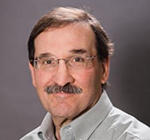The missing piece in the response to climate disruption—preparing humans to cope with the trauma and toxic stress it causes—was the focus of a recent Conference on Building Human Resilience for Climate Change sponsored by the International Transformational Resilience Coalition (ITRC). About a hundred mental health professionals, emergency response and disaster management officials, and others from education and faith communities gathered in Washington, DC, for the two-day event.  Bob Doppelt, director of the non-profit The Resource Innovation Group, launched the ITRC in the spring of 2014 after bringing together leaders to support the effort, including Dr. Sandra Bloom, co-founder of the Sanctuary Model, and Elaine Miller-Karas, executive director of the Trauma Resource Institute. Interviews with Bloom and Miller-Karas along with other coalition founding members and background on the initiative were included in a 2014 story in ACEsTooHigh.com. Both Bloom and Miller-Karas presented at the meeting, which was held Nov 3-4 at the American Psychological Association.
Bob Doppelt, director of the non-profit The Resource Innovation Group, launched the ITRC in the spring of 2014 after bringing together leaders to support the effort, including Dr. Sandra Bloom, co-founder of the Sanctuary Model, and Elaine Miller-Karas, executive director of the Trauma Resource Institute. Interviews with Bloom and Miller-Karas along with other coalition founding members and background on the initiative were included in a 2014 story in ACEsTooHigh.com. Both Bloom and Miller-Karas presented at the meeting, which was held Nov 3-4 at the American Psychological Association.
The conference is part of the coalition’s work to create a movement to build resilience in individuals and communities—to prevent mental health and psycho-social-spiritual problems—in the context of climate adversities. The magnitude of present and future climate adversities brought urgency to the discussions but many of the lessons and strategies to increase individual and community resilience are applicable regardless of the source of the trauma and toxic stress. The importance of building resilience at both the individual and community levels in advance of crises was a major theme of the presentations and discussions.
To ensure that all the participants had the basics on the science of climate change, meteorologist Tom Di Liberto from the National Oceanic and Atmospheric Administration gave a primer on atmospheric warming. He punctuated his talk with humorous animal photos and videos to provide relief from the discussion of the dire consequences of climate change. Both Di Liberto’s slides and audio recording are available on the conference page on the website.
For a report on the workshop “Culturally Appropriate Methods for Building Human Resilience Within Faith Communities” and the conference in general, see the blog by panelist Dr. Margaret Bullitt-Jonas from the Missioner for Creation Care, Episcopal Diocese of Western Massachusetts, United Church of Christ.
Elaine Miller-Karas, executive director of the Trauma Resource Institute, led a workshop on the Community Resilience Model, which focuses on how to use skills to stabilize the nervous system in adversity. Trudy Townsend, former coordinator Creating Sanctuary in The Dalles, OR, and a member of the ITRC steering committee, moderated the session. (Conference slide presentations are now available; audio recordings may be available later).
Miller-Karas has brought resilience models to communities around the world with the goal of creating capacity in local communities, using a biological-based model. She emphasized the importance of cultural sensitivity that recognizes many faith-based perspectives. Strategies to build community resilience include helping individuals to access local resources and identify for themselves who and what can provide support in the face of adversity.
The Resiliency pen, with its pull-out scroll with the text for “Grounding, Resourcing, and Shift & Stay”, is one of TRI's tools for supporting independent practice of the resiliency skills. The pen is also a fundraiser for the support of TRI's projects.
Robin Saenger, founding director of Peace4Tarpon in Tarpon Springs, FL, presented at a plenary “The Principles, Methods, and Benefits of Building Human Resilience for Climate Change Within Towns and Cities". On that panel, Townsend described how The Dalles, a small community in Oregon, used the Sanctuary Model as a blueprint to transform programs to become trauma-sensitive to help children and families.
ACEsConnection will announce when the audio recordings are available.



Comments (5)